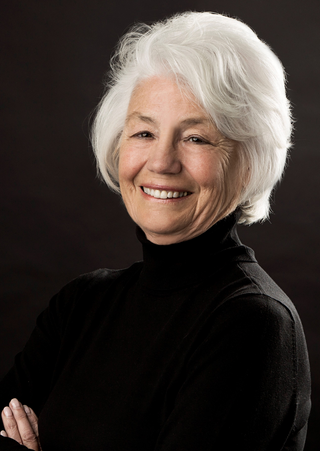The United States uniformed services and the Veterans Health Administration of the Department of Veterans Affairs have the mandates and the capabilities to help American communities in times of national crisis such as that presented by the coronavirus pandemic. I have previously outlined the limited extent to which these valuable resources have been used to date. In this article, I look at what more could be done and the limitations facing the greater involvement of these services.
What else could/should be done?
Three key emergency mechanisms have yet to be invoked to stem what is already clearly a national emergency.
1. The National Disaster Emergency System
The National Disaster Emergency System (NDMS) is a 6,000-person strong, federally-coordinated system that augments the nation’s medical response capability. It is coordinated by the Department of Health and Human Services (DHHS), supported by the Department of Defense and Veterans Health Administration (VHA) medical systems. To mobilise these resources during an emergency, a state will ask the Federal Emergency Management Agency (FEMA) for a disaster declaration which includes medical assistance. FEMA then tasks the DHHS to fulfil that request and mobilise NDMS teams. Alternatively, the DHHS Secretary can declare a Public Health Emergency, which Secretary Michael Azar did on 31 January, effective 27 January.
There has been no official announcement and no obvious signs that the National Disaster Emergency System has been called into action.
Despite this, there has been no official announcement and no obvious signs that the NDMS has been called into action. One might postulate that the Trump Administration either thinks this is not necessary or – even as Trump talks up re-opening the country – it wants to avoid further signs that the coronavirus pandemic is a “disaster”.
2. The Veterans Health Administration
The VHA has stated its willingness to help, saying “VA stands ready to surge capabilities into civilian health care systems” but awaits requests for help. The VHA has a surplus of beds in many of its 172 hospital centres which also have special rooms for patients with breathing disorders.
Intriguingly, mention of the important “fourth mission” was recently deleted from the Department of Veterans Affairs website.
3. The US Public Health Service Commissioned Corps
According to its website, the United States Public Health Service Commissioned Corps (USPHSCC) is standing by in a state of deployment readiness. All Corps officers were placed on involuntary alert status on 25 March. While some strike teams have been deployed, that does not engage the full force of the Corps, which includes doctors, nurses, pharmacists, dentists, and engineers.
What are the barriers to greater involvement of the uniformed services?
As highlighted by my USSC colleagues, the ability of the United States military, and indeed all the uniformed services, to assist in supporting civilian agencies in the battle against coronavirus is hindered by the extent of their own simultaneous battles to preserve healthy forces as the virus spreads and to uphold operational readiness and commitments abroad. Secretary of Defense Mark Esper has stated that the Defense Department wants “to be the last resort” in relief efforts. This is reflected in the 2018 National Defense Strategy which, unlike previous versions, contains no mention of the military’s role in pandemic responses.
Secretary of Defense Mark Esper has stated that the Defense Department wants “to be the last resort” in relief efforts.
The military is in many respects more vulnerable to the ravages of coronavirus than the civilian world. The Army has admitted that mitigation measures to blunt the spread of COVID-19 have proven “insufficient” and coronavirus infections on Navy warships are rising.
The military hospitals (there are fewer than 40 in the United States) are small and geared more to the treatment of trauma than infectious diseases. Many military medical personnel are now reservists and may already be working on the "frontline" in their civilian capacity.
Meanwhile the VHA, which has long had a doctor shortage, is struggling to deal with coronavirus outbreaks in its residential care facilities. Veterans’ homes in New Jersey are in such crisis that the National Guard has been called in to help.
Budget shortfalls and personnel cuts mean all the uniformed services are struggling to fulfil their missions. The Army’s response to the coronavirus outbreak is short of funding by almost $1 billion, and the Pentagon is withholding more than $104 million from the military’s laboratories that are conducting cutting-edge research on infectious diseases. The numbers of military medical personnel have been cut by 18,000 or 20 per cent.
Although many of the authorities that are necessary to enable mobilisation of these needed additional armaments in the battle against the raging pandemic have been invoked, this has not resulted in action.
The President and others have lauded the work of the “great Commissioned Corps” at White House press briefings, but behind the scenes, the Trump Administration has previously proposed cutting USPHSCC personnel by 40 per cent. While that has not happened, the ranks have been eroded by neglect.
The numbers of healthcare workers in the uniformed services and reserves now available for deployment have also thinned because many of these people are already providing medical care in their local communities. Moving them to coronavirus hot spots might mean better use of scarce resources but it is increasingly difficult to pull them away from their current efforts.
Conclusion
The story around what has been done and what has not been done to take advantage of the resources of active and reserve military units, the USPHSCC, the VHA and the established government emergency response teams reflects that of the general response from the Trump Administration: too little, too late. That applies to preparedness, coordination, deployment and utilisation.
Although many of the authorities that are necessary to enable mobilisation of these needed additional armaments in the battle against the raging pandemic have been invoked, this has not resulted in action. There is no federal government strategy to defeat coronavirus and it shows.
This is part two of a two-part feature on the United States uniformed services’ response to COVID-19. The first asked: What are the limitations facing the uniformed services? And what more can be done?






